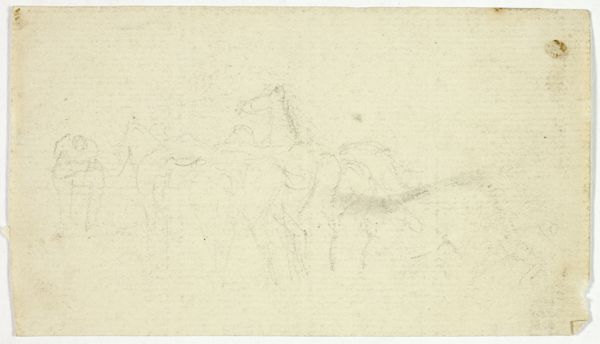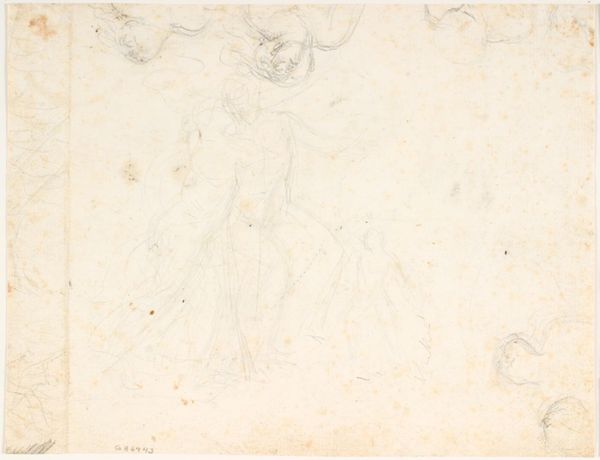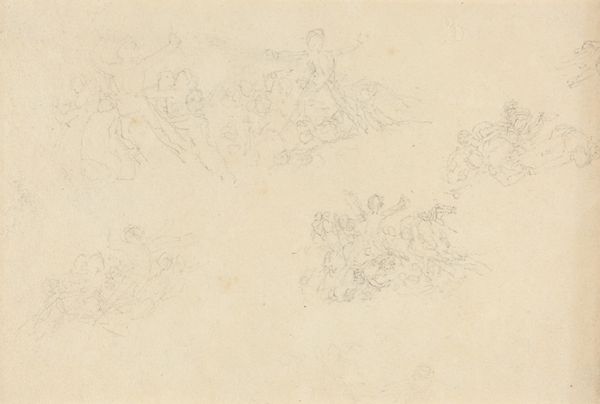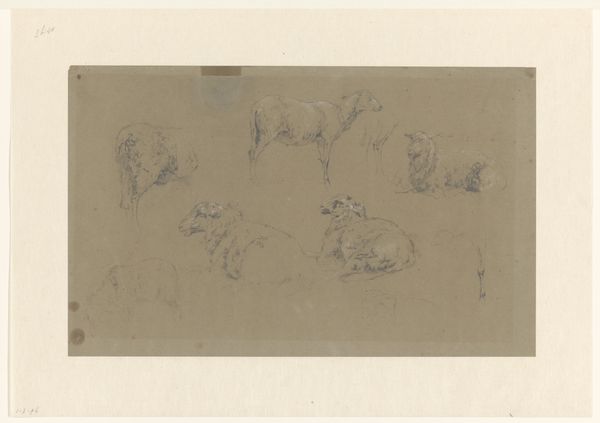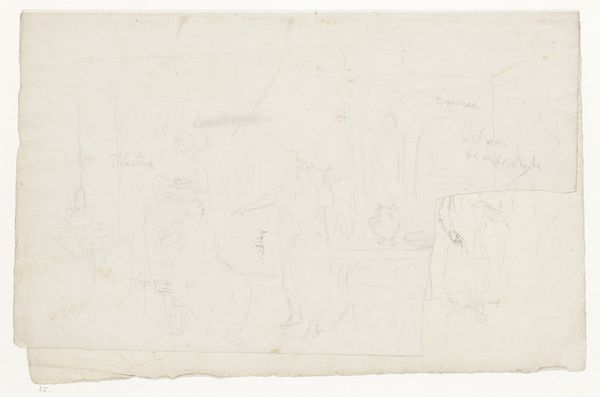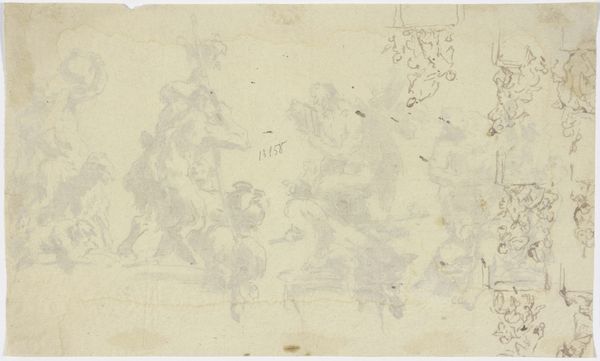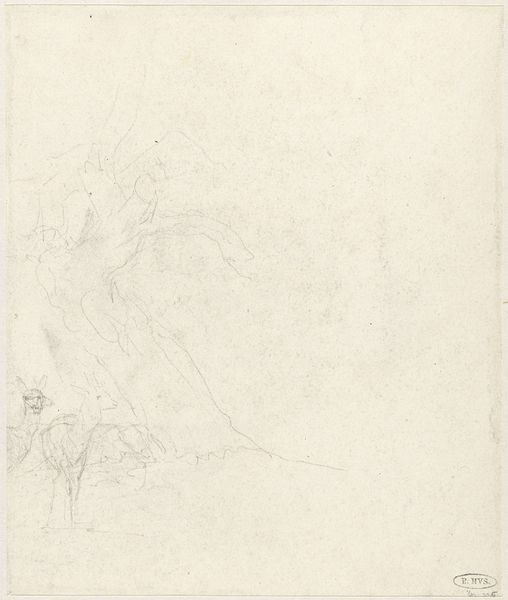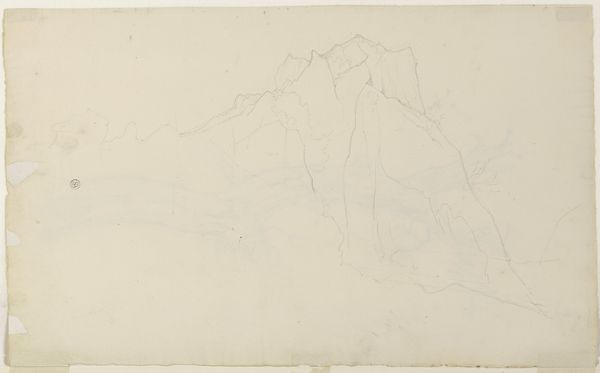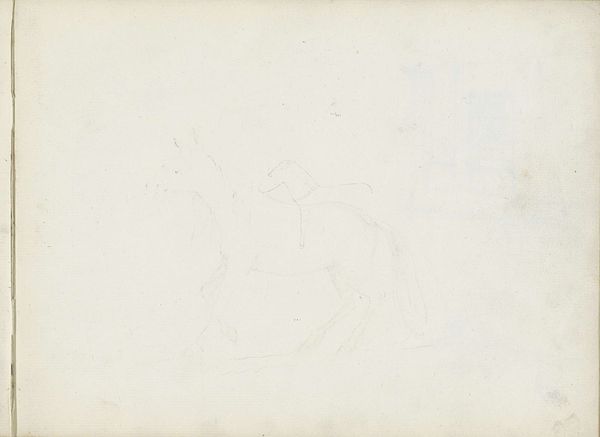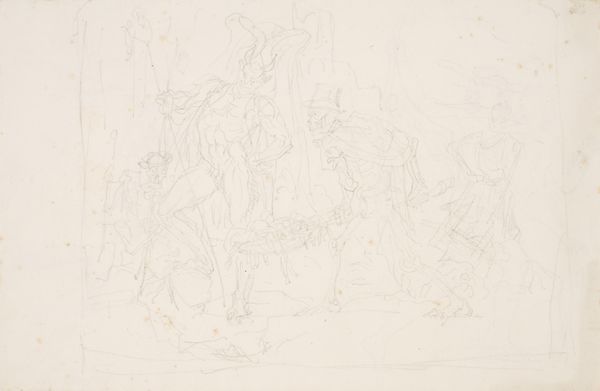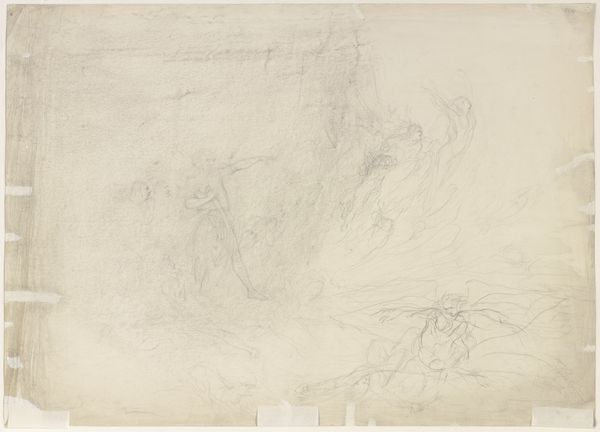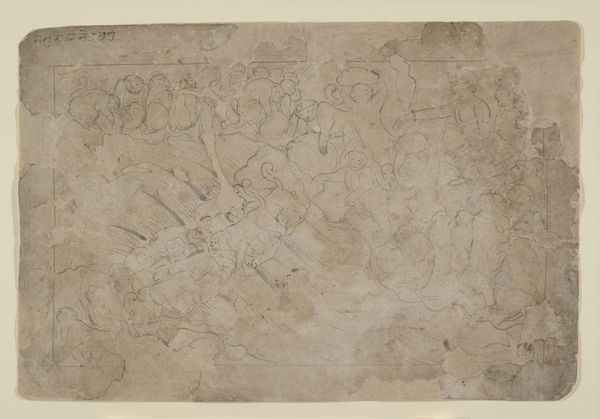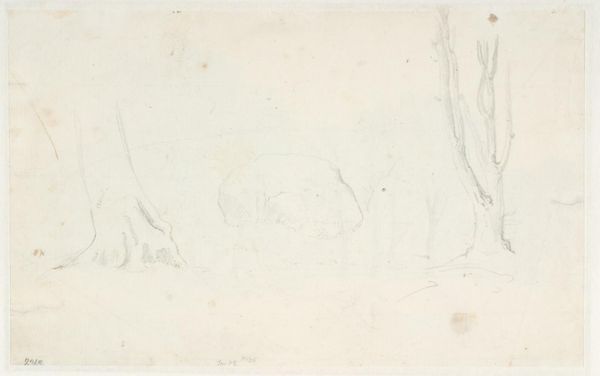
drawing, pencil
#
drawing
#
landscape
#
figuration
#
pencil
Dimensions: 125 mm (height) x 164 mm (width) (bladmaal)
Editor: We're looking at "Loose Sketches of Horses" by C.A. Lorentzen, created between 1746 and 1828. It's a pencil drawing, and I'm struck by the energy it captures despite being just sketches. What do you see in this piece, considering its historical context? Curator: This work offers a fascinating glimpse into the social role of horses in 18th and early 19th-century Denmark. Horses weren't just animals; they were potent symbols of power, class, and even military might. These sketches, however "loose", speak volumes about the relationship between humans and these animals within a hierarchical society. How do these representations of horses challenge or reinforce existing social structures? Editor: Well, I see more of an observation of form and movement. It feels like Lorentzen was more interested in anatomy than making a statement. Is it fair to say that, at times, we force our contemporary understanding onto past artworks? Curator: That's a crucial point. While the artist's intentions remain elusive, our engagement with this drawing is inherently shaped by our present-day concerns. However, we can consider how the artist's class and social position influenced their observation and representation of the horses. Whose horses are these likely to be, and what purpose do they serve? By analyzing the form and style, could we infer a critique, or at least a commentary, on the equestrian culture of the time? Editor: So, even in simple sketches, we can explore how power and social status played out. I'll definitely look at art from that perspective from now on. Curator: Exactly. By questioning the seeming "objectivity" of these sketches, we start to unpack the complex relationship between art, society, and historical power structures. It gives us insight to question present social structures as well.
Comments
No comments
Be the first to comment and join the conversation on the ultimate creative platform.
